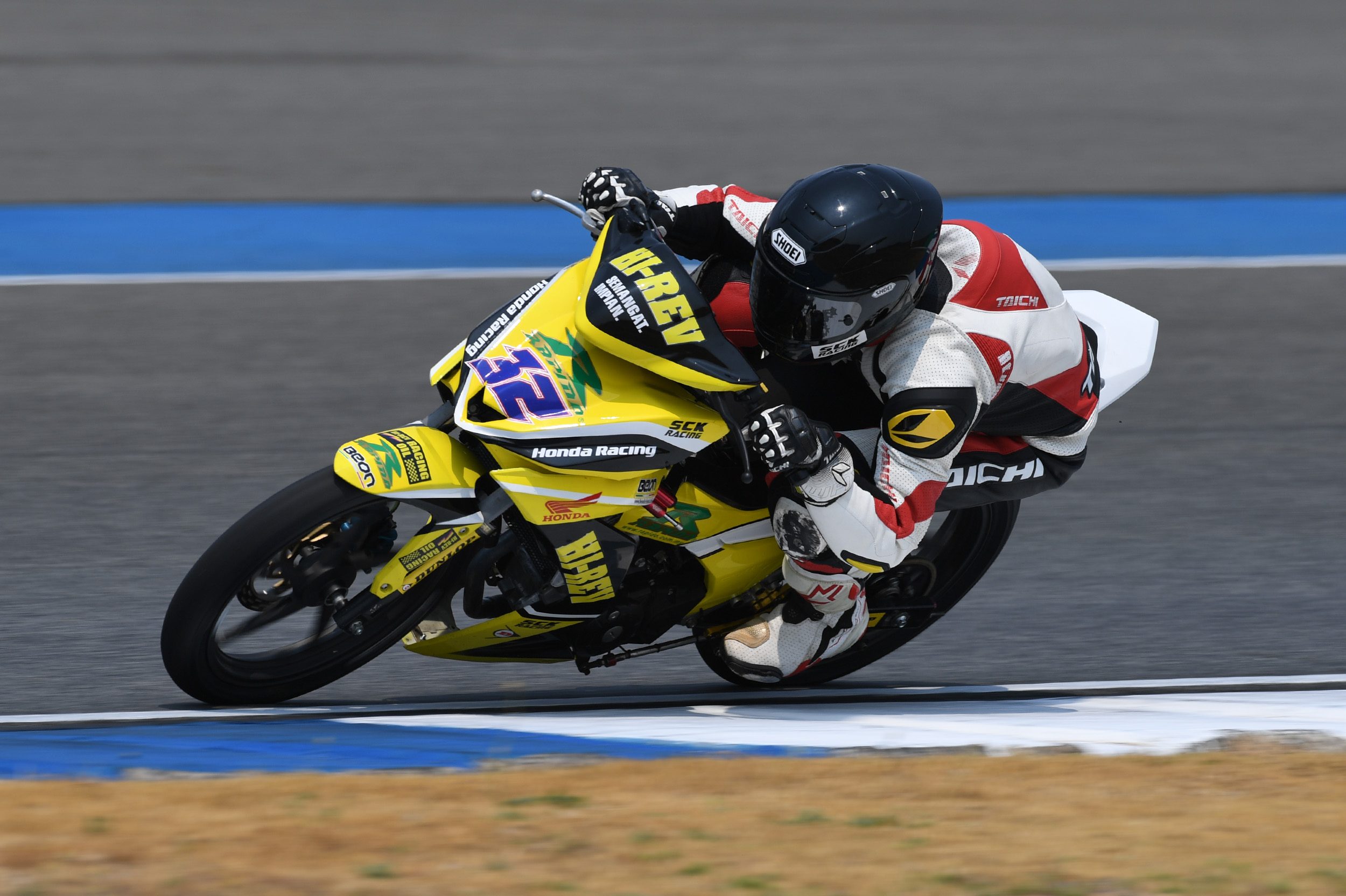Underbone Racing For The Uninitiated
Underbone racing is a unique genre of motorsports that began predominantly in South East Asia, primarily, Indonesia, Thailand and Malaysia. In recent years, the popularity of the sport has fired up in other emerging Asian markets such as Vietnam and the Philippines, to name a few.
An Underbone race is renowned for its pack-racing characteristics. It’s always head-down-elbows-out from lights to flag.
It’s NOT A Scooter!
An underbone bike uses structural tube framing and is overlaid by plastic or non-structural body panels. The only characteristics that an Underbone bike shares with a moped or scooter, is the tube framing and the position of the fuel tank.
In terms of wheel size, engine position and power transmission, the underbone bike is functionally identical to conventional motorcycles.
| Description | Yamaha Y15ZR | Honda RS150R |
| Wheel Base: | 1290mm | 1276mm |
| Weight: | 115kg | 123kg |
| Gear: | 5-speed | 6-speed |
| Power Distribution: | ECU
Fuel Injection Single Cylinder Liquid Cooled 149.7cc 15.4hp @ 8,500 rpm 13.8Nm Torque @7,000 rpm |
ECU
Fuel Injection Single Cylinder Liquid Cooled 149.1cc 15.63hp @ 9,000 rpm 13.5Nm Torque @ 6,500 rpm |
| Race Spec: | 23 – 25 hp | 23 – 25 hp |
The Underbone 150 Category In The Asia Road Racing Championship
The Underbone genre has been a part of the Asia Road Racing Championship since the inception of the series in 1996. Over the years, it has evolved from 2-stroke to the current 4-stroke.
Undoubtedly, this is considered as the highest level of underbone racing anywhere in the world.
Underbone As A Grassroots Platform
Indonesia and Malaysia, in particular, has been successful in developing the sport of Underbone racing into a viable grassroots platform.
The bikes are smaller and lighter, easily managed by kids as young as 13. With less horsepower, rider talent comes to the fore.
The smaller size of the bikes allow underbone races to be held outside of traditional race circuits. Hence, the popularity of street racing in South East Asia. This key point – the mobility of the underbone championships – is one of the reasons for its immense popularity. Instead of relying on fans to travel to a fixed race circuit, these mobile championships bring the excitement of the sport right to the doorsteps of their fans.
The Notables
Every single Malaysian and Indonesian rider currently racing in either the world or European series can trace their roots back to Underbone racing.
These include Hafizh Syahrin Abdullah, Khairul Idham Pawi, Adam Norrodin, Zulfahmi Khairuddin, Doni Tata Pradita, Rafid Topan Sucipto, Dimas Ekky Pratama, and Gerry Salim, to name a few. Other notable names include Red Bull Rookies rider Kazuki Masaki who also spent a couple of years on the Underbones as part of his early training.
It’s Not A Conveyer Belt
However, the image of underbone racing as a conveyer belt that continuously spit out aspiring young riders for the world stage is fictitious at best.
Underbone racing in Malaysia, Indonesia and Vietnam have become successful racing series in their own rights. Many of the top riders have established lucrative careers, some that span close to a decade.
Some choose to chase after the GP dream. Others don’t. It’s the riders’ decision and freedom to determine the course of their careers. This explains why, in 2018, the Underbone 150cc class features as many as five champions on a single grid.
What’s New In 2018?
The latest announcement on the use of Moto3 tyes in the Underbone 150cc class had ignited a flurry of excitement from Asian fans.
A race class renowned for its close fighting has now been taken to a whole new level as the new tyres allow riders better rolling speed, improved braking points and deeper lean angles.
ARRC Underbone 150cc Tyre Description:
| Front | Rear | |
| Size | 90/80R17 | 150/60ZR17 |
| Pattern | Moto3 | Moto3 |
| Rec. Rim (in)
|
2.15 | 3.00 |
| Rim Range (in) | 2.15 – 2.50 | 2.75 – 3.50 |
| Width (mm) | 88 | 113 |
| Centre Diameter (mm) | 578 | 601 |
| Cold Pressure (kPa) | 160 – 210 | 170 – 220 |
| Hot Pressure (kPa) | 180 – 230 | 190 – 240 |

